Colorado is home to several species of birds and certainly has no shortage of picturesque backdrops for them to nest and roost. For those who consider themselves “Birders” and want to add a few sightings to their list, the state of Colorado is a great place to explore.
Being able to identify a bird you’ve noticed in your backyard or along a hike is also rewarding. Here are ten common native birds of Colorado that you may encounter, whether enjoying the sights and sounds of the wide-open plains or trekking the scenic Rocky Mountains. Always keep an ear and eye alert for local wildlife, both for safety and memories.
Lark Bunting
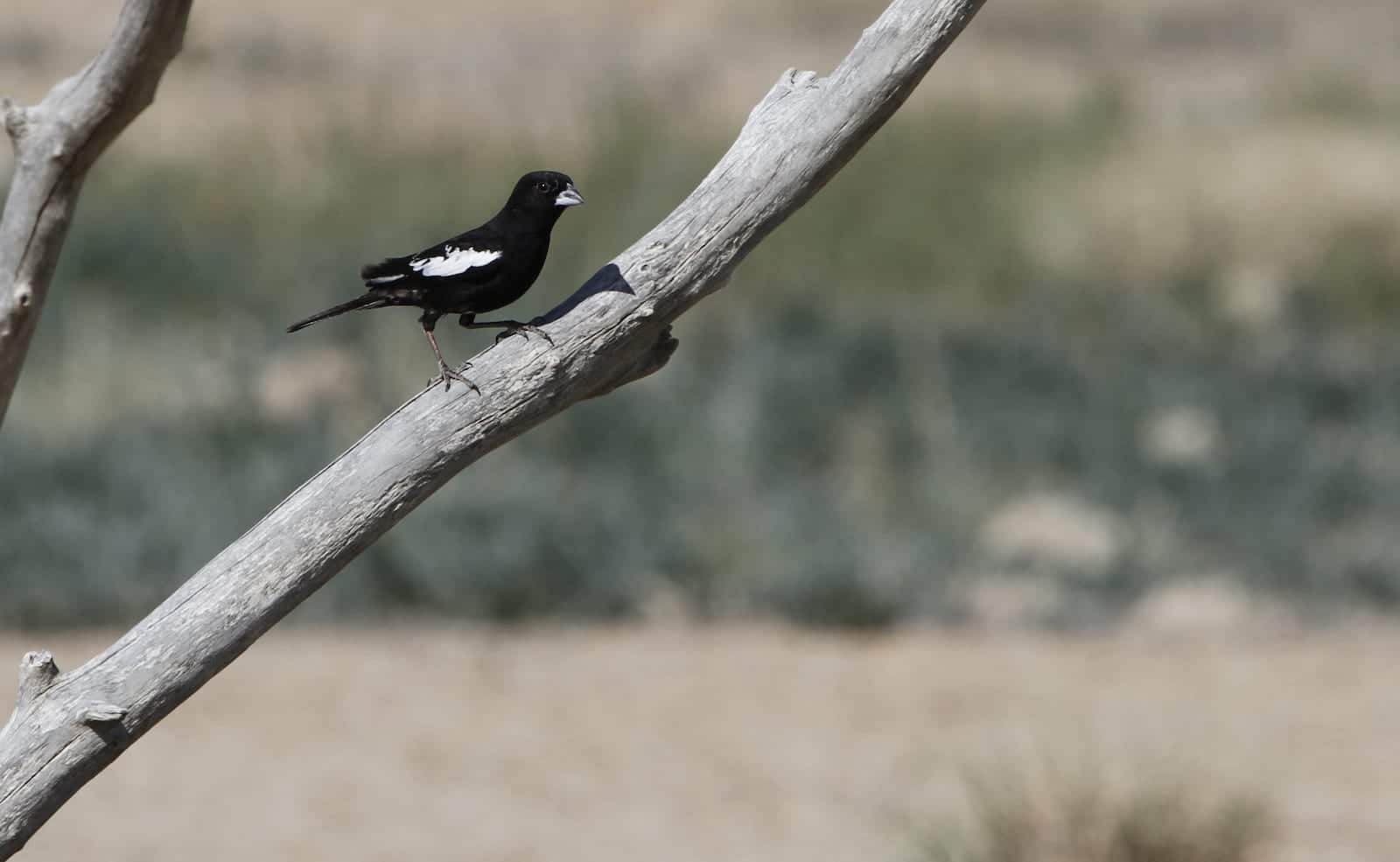
No list of Colorado birds should be without the Lark Bunting. It is the Colorado State Bird after all! This unique Calamospiza is the only member of its genus and resides in the grasslands of North America with healthy numbers keeping it out of conservation concerns. Even though numbers are strong, the loss of their natural prairie habitat has resulted in a decrease in their population.
These songbirds are relatively small, measuring only six inches in length. They have a thick, short bill that has a blue tone to it. Adult male Lark Buntings are black with a large white patch on their wings. Females, however, are mostly brown with white undersides and heavy streaking. Like their male counterparts, females also have a light patch on their wings.
If you notice an open cup nest in a grassy area, it very well could be that of a Lark Bunting. They generally feed in low areas, too, with their main diet being insects and seeds.
Brown-capped Rosy Finch

Brown-capped Rosy Finches deserve extra care and attention as an endangered species. These medium-sized finches have a name that describes their plumage. Adults have brown heads with the color extending down their backs. Their “rosy” bellies are quite distinctive and they also have pink feathers on their wings and their undersides.
A long tail is forked and they have a black forehead and legs. An interesting fact is that they have mostly black bills during the breeding season that turn yellow during the non-breeding season.
Although these birds spend the winter months at lower elevations, their breeding grounds are the central peaks of The Rocky Mountains. If they don’t reuse an abandoned Cliff-swallow’s nest, they will build their own cup nest in a rocky cavity.
They usually feed together in small flocks, mainly on seeds of various grasses and weeds. They also like to eat small insects, occasionally doing so mid-flight.
American Dipper
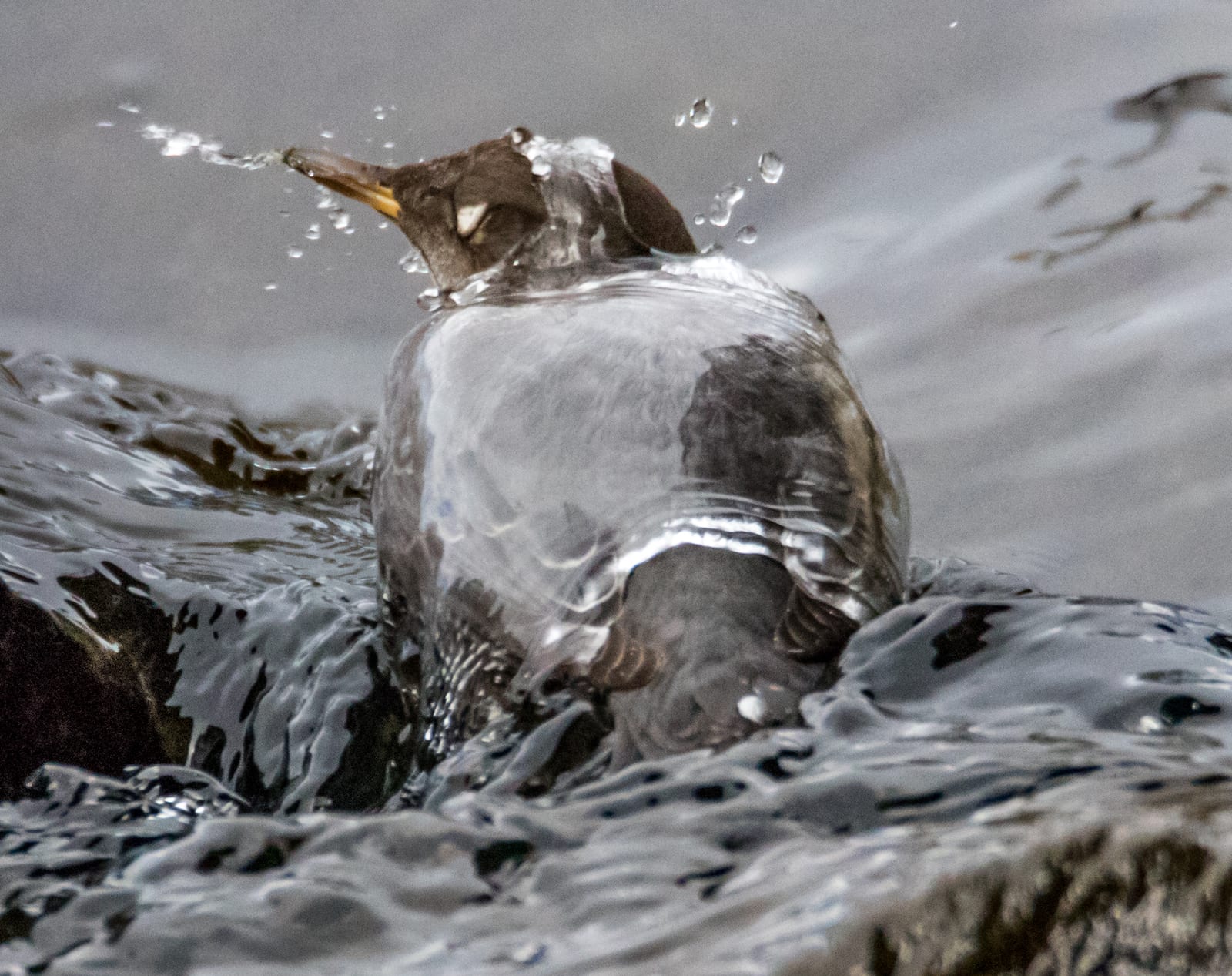
American Dippers are small but stout birds that feed solely in aquatic habitats. They are North America’s only amphibious songbirds with their nests being primarily alongside streams. They build dome-shaped nests out of moss, grasses, leaves, and bark. Since they live close to their water habitat, American Dippers protect their young by building nests 6-20 feet above deep water.
Living near streams means these medium-sized birds feed on aquatic insects and larvae as well as dragonflies, small fish and fish eggs, worms, and flying insects. They bob up and down while standing in rushing water and can even dive underwater in search of food. They are also known to move rocks at the bottom of a stream to get to their meal.
Although they are mostly monogamous, many choose to live in solidarity during the winter months. Once their young are old enough to leave the nest, they often divide their family and part ways until the following breeding season.
Gray Jay
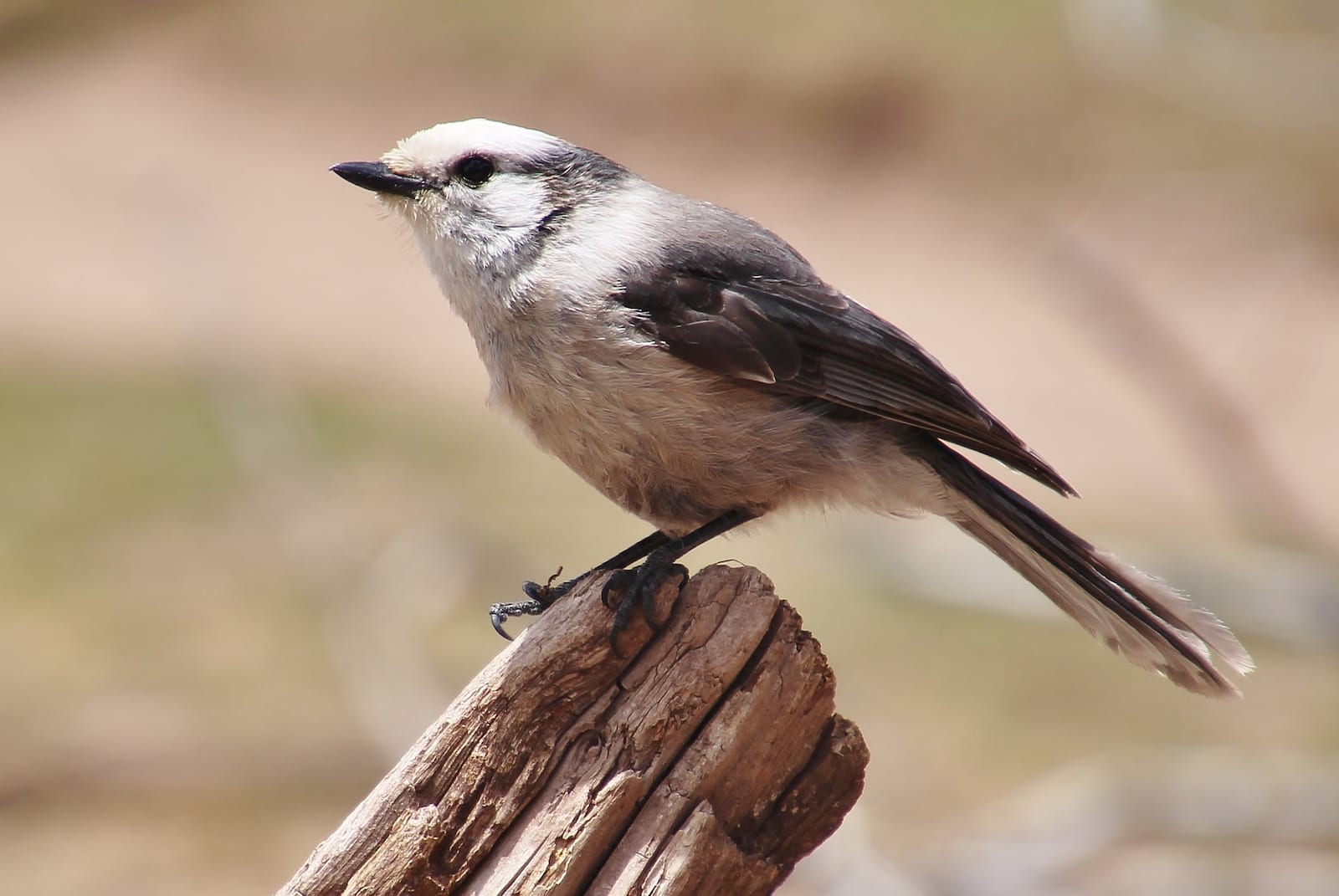
Gray Jays, also known as Canada Jays, are omnivorous birds that feed on a wide range of foods. They hunt for amphibians, fledglings of other birds, rodents, and small mammals, but they also eat insects, berries, and fungi. They are known to be curious about humans and any possible food they might be willing to share, too, so guard your snacks!
Gray Jays make their homes in forests across North America, which means you’re most likely to see them in the Rockies of Colorado. They will build their nests in trees at moderate to low heights on the south-facing side of a forest area. This ensures they can take advantage of the extra warmth provided by the sun, especially considering their choice to breed during the frosty months of February and March.
Despite their somewhat perverse feeding habits, Gray Jays are deceivingly charming in their appearance. Adults are pale gray overall but have a white head that includes a small patch of gray at the back. Their wings and tail feathers tend to be darker shades of bluish-gray and their bills are usually black.
Belted Kingfisher

Belted Kingfishers are year-round residents of Colorado. They live near bodies of water that support their preferred diet of small fish, crustaceans, insects, and amphibians. They will also eat berries, small mammals, and even other birds.
You’re most likely to see a Kingfisher perched on a telephone wire or a bare branch, watching the water as it waits to see its target. Once spotted, the Kingfisher will dive swiftly to pluck its food from the water. Then it will return to its roost and swallow its catch head first, after banging it against the perch.
You’re not likely to see a Belted Kingfisher’s nest “by chance”. The male and female pair take turns digging into the ground with their strong bills. They cut a tunnel about 3-6 feet long before ending their burrow with a hollow that is 8-12 inches in diameter and about 7 inches high. They generally choose locations close to the water, but for obvious reasons avoid areas with tree roots that make digging difficult.
Belted Kingfishers are one of the few species of birds that have females generally showing more color than males. Both sexes have a slate blue head with a matching “breastplate”. Their wings are also blue with black tips and they have a white collar around their necks.
Females have an additional band of rust-colored feathers across their upper belly which extends down to their legs. One of the most distinctive features of a Kingfisher is its large black bill, which seems disproportionate to the bird’s compact frame.
White-breasted Nuthatch

More often than not, you’ll see this little bird looking as if it’s upside down. That’s because it usually works its way down and around a tree headfirst. Males and females look very similar, with the only noticeable difference being that females have a gray patch on their heads whereas males have a black one. Females tend to have a bit more cinnamon-brown coloring on their undersides than males, too.
Their diet consists of mostly seeds and nuts, the meatier the better for these little Nuthatches. Once they find a seed or nut, they will hammer it into the bark and then use their beak to pry it open. When they are foraging for storage, they will hide their food one piece at a time.
They’ll often cover seeds and insects with snow, lichen, a piece of bark, or moss. In the wintertime, you may spot White-breasted Nuthatches joining flocks of chickadees, woodpeckers, or titmice during their foraging routine.
If you’re looking to attract White-breasted Nuthatches to your backyard, try filling your feeders with plenty of hearty nuts such as sunflowers and peanuts. Also, consider limiting the heavy pruning of your trees. These birds rely on dead or partially dead trees for their nesting habitat. You might even be able to attract a breeding pair by putting up a nest box that offers protection from predators.
Cedar Waxwing
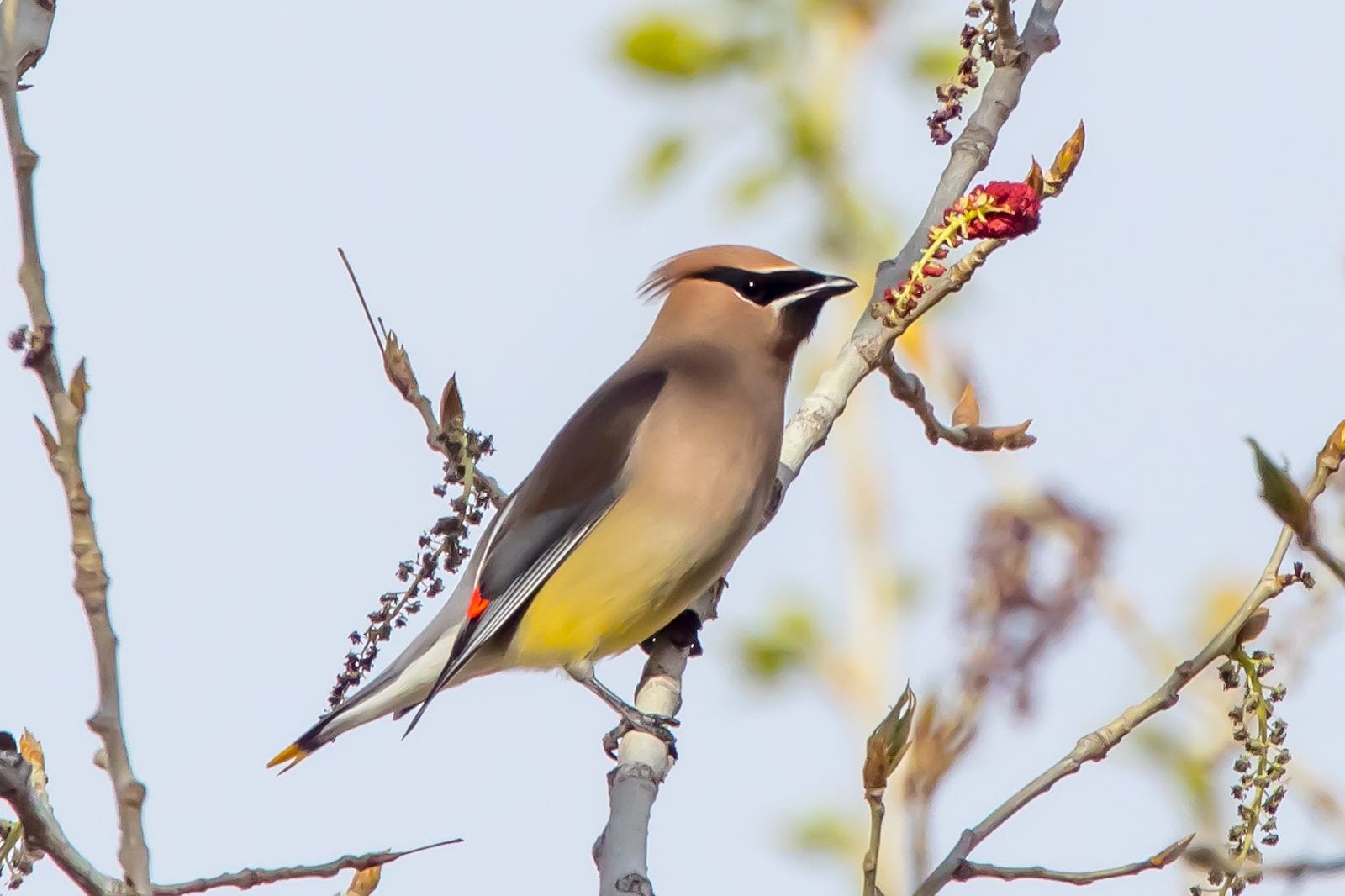
The central and northern parts of Colorado host the Cedar Waxwing year-round. You’ll probably hear them before you see them. Their song is particularly high-pitched and easily recognized once you’ve learned it.
Their markings have a “smooth” appearance to them due to their sleek feathers. They are medium-sized birds with a crest that protrudes from the back of their head and down their neck when they lie flat. Their heads and chests are light brown, with a black mask on their face. The brown feathers fade to gray on their wings and pale yellow on their undersides.
Most Cedar Waxwings have red waxy tips which aren’t always easy to see.
They are very social birds and are usually seen in flocks, especially during the winter while they are foraging for fruit. The Cedar Waxwing is so attracted to fruit that they are known to be found either intoxicated or dead from over-indulging on ripe fruit that has started to ferment.
A unique thing about Cedar Waxwings that sets them apart from other fruit-eating birds is that they eat berries whole, letting the seeds pass straight through their digestive system, rather than regurgitating them. Scientists have used this trait to study more about their diet and habits.
If you’re specifically looking to add a sighting of a Cedar Waxwing to your list, be sure to watch big flocks of similarly-sized birds because they tend to join other birds to make large groups. Their preferred habitat is in wooded areas, especially those that provide ample opportunities to find fruit. Their love for fruit makes orchards a great place to look for them, too.
Black-capped Chickadee

The Black-capped Chickadee’s adorable features and its curiosity for everything, including humans, make it one of the cutest birds in the world. It is often seen flitting around checking out anything in its habitat that catches its attention. The entire state of Colorado is considered home year-round for this easily-spotted chickadee.
The first thing you will notice is its black-capped head which looks oversized for its little body. It also has a white mask that extends under its eyes, from the beak to the nape of its neck. It has a black “bib” directly under its beak and a white tummy that blends to beige just before its gray wings. Adding to its rounded appearance is its stubby beak in contrast to its long tail.
Black-capped Chickadees are extremely agile, often looking rather “acrobatic” in their movements through smaller branches of trees. They may be seen perched upside down or sideways as they keep an eye out for predators or food.
They are some of the easiest birds to attract to backyard feeders due to their inquisitive nature and their love for sunflower seeds and peanuts. Don’t be surprised to see one scurrying off to hide its stash and then return for more to stow away in various places. They can remember thousands of hiding spots and use this skill to store for the winter months.
American Kestrel
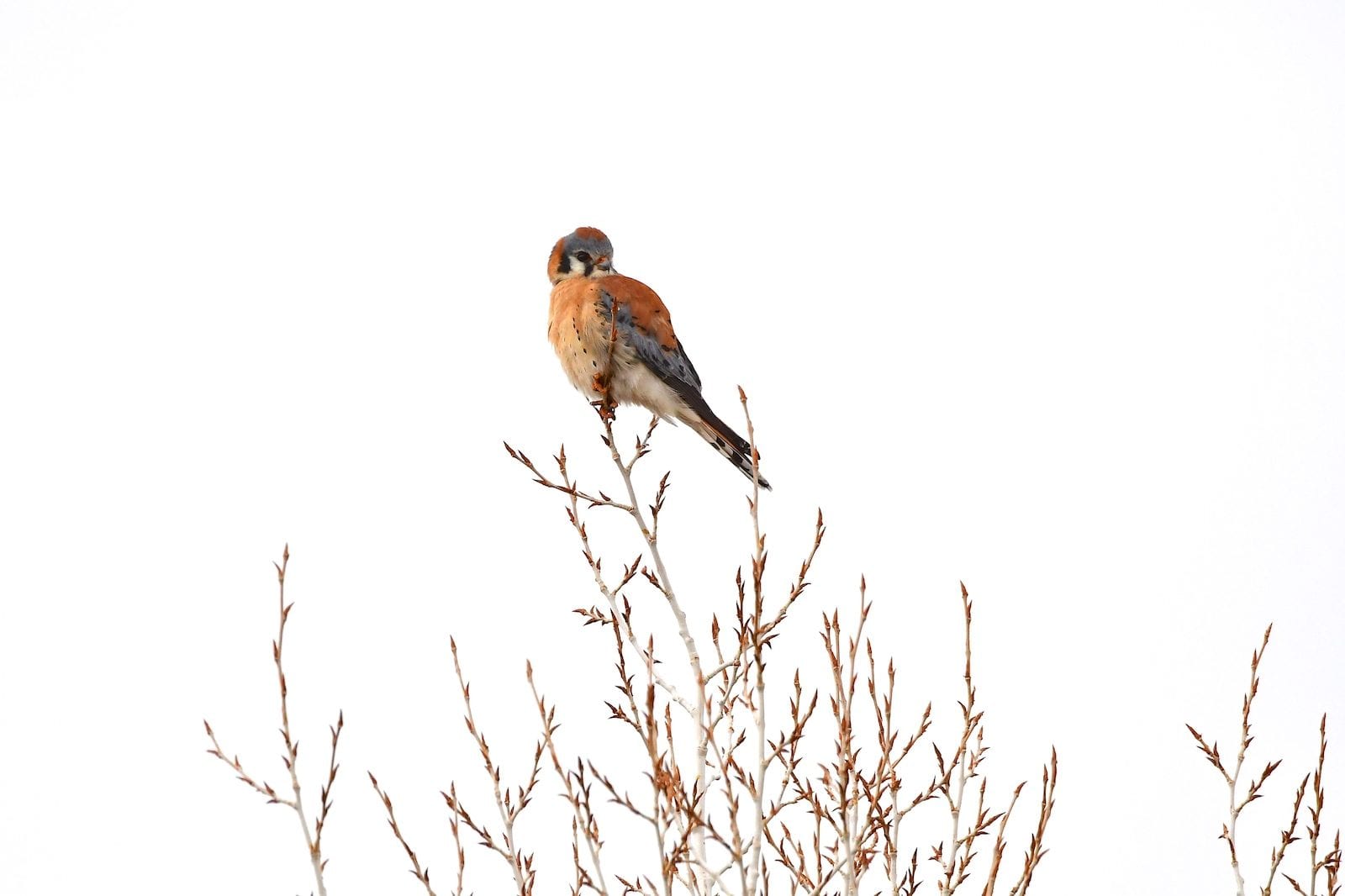
American Kestrels are another year-round resident of Colorado. They are the most colorful of all North American raptors with adult males having a slate blue cap and wings, rusty back feathers, and black spots that cover the majority of their bodies. Females tend to be mostly rusty-colored with similar black spots. Both genders have two vertical black stripes on each side of the face.
These little falcons hunt for insects and small prey in open spaces, so keep an eye out on fence poles or power lines when traveling through farmland or long stretches of highway. They may sit in the same spot all day long while they scope out potential food. At other times, they will shift from one perch to another in a matter of minutes.
They’re somewhat unpredictable in that regard. One trait they are known for, however, is pumping their tail feathers after landing and while perched.
American Kestrels nest in cavities of trees or nest boxes, but they don’t carve out their own nesting sites. They’ll use an old woodpecker nest or find a crevice in a rocky area, otherwise, they will use a naturally formed tree hollow or a man-made structure they deem suitable. The male is usually tasked with finding a site and the female makes the final approval when he succeeds at finding a satisfactory place for their young to be born and raised.
Golden Eagle
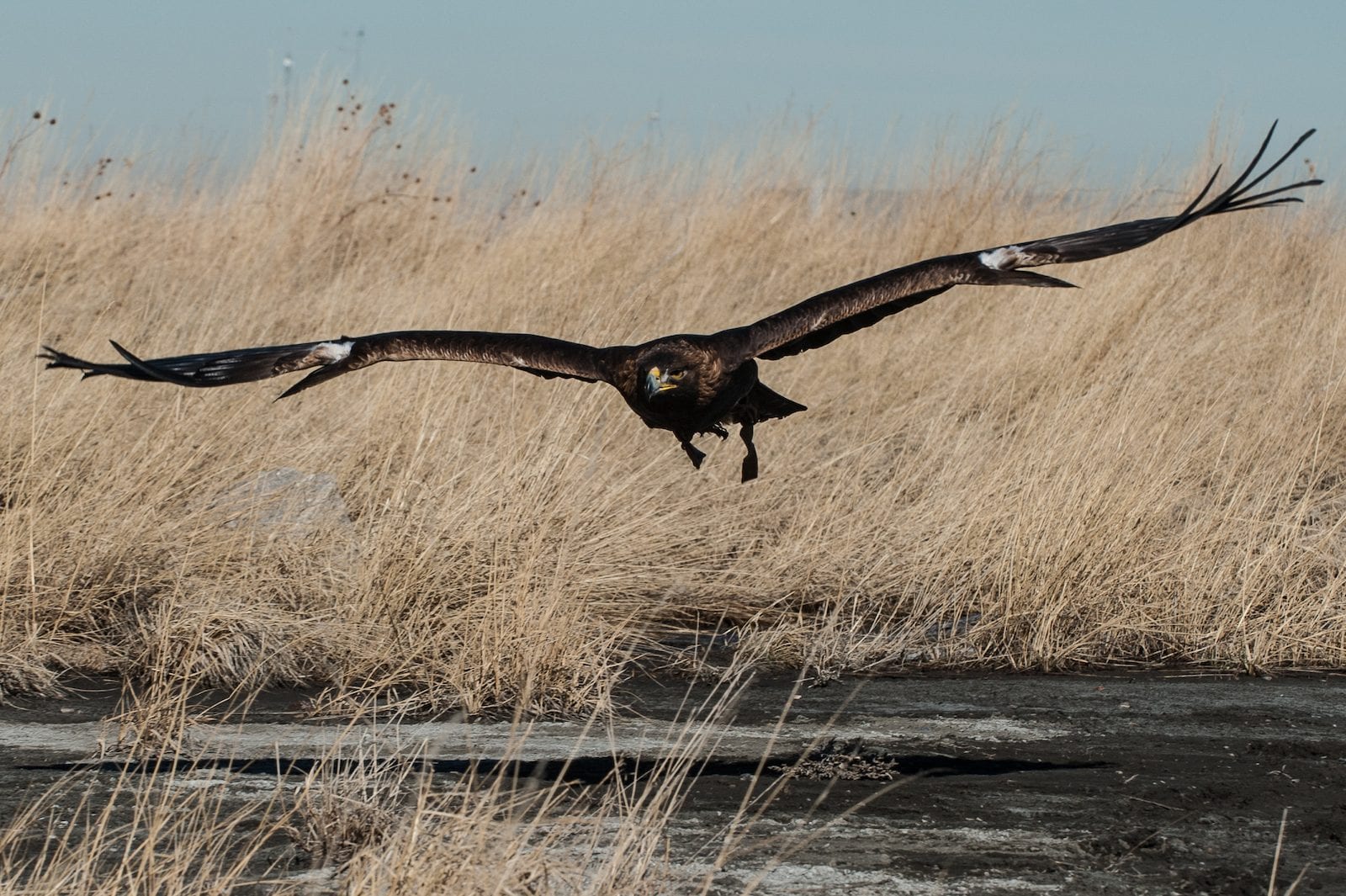
These giant raptors are renowned for being some of the largest birds of prey in North America. Their wingspan can be as broad as 7 feet wide, with adult females being larger than males. They are also one of the fastest and most agile flyers for their size, reaching diving speeds of up to 200 miles per hour.
Golden Eagles are mostly brown, but they do have a distinctive crown of gold feathers extending to the nape of their necks, giving them their name. Their tarsal feathers are usually lighter in color, as are the shoulder feathers of some adults. They have a dramatically hooked beak that is black at the tip, fading to a golden yellow where it meets the face. Both males and females have similar markings.
Although these giant birds are capable of killing large animals such as domestic livestock, deer, and coyotes, they typically feed on small-medium-sized mammals like prairie dogs, hares, and ground squirrels. They usually hunt for live prey but are also known to feast on the remains of dead animals.
Outside of their activities for finding food, Golden Eagles are relatively sedentary. They sit on perches or nests for most of the day and sleep during the nighttime hours. But when you do catch a glimpse of one in flight, it’s certainly a majestic sight!
Go Birding in Colorado

514 species of birds have been identified in the state of Colorado, as of February 2022. That’s a list that will certainly keep any bird watcher busy for quite a while. There are a reported nine species of hawks to discover roaming the skies from the prairies to the mountains.
Perhaps you’ve already seen the aforementioned native birds, or maybe you’ve enjoyed their company in your backyard but didn’t know their names. Whatever the case, we hope you’ve learned some interesting facts about a few of Colorado’s feathered friends and that you’re keen to learn more about the rest of them.
To keep your wildlife education going, see how you are at identifying the common snakes of Colorado and its common spiders. While both of these creepy, crawly animals get a bad rep, very few are poisonous and most are completely harmless to humans.


 Colorado’s Most Popular Breweries
Colorado’s Most Popular Breweries